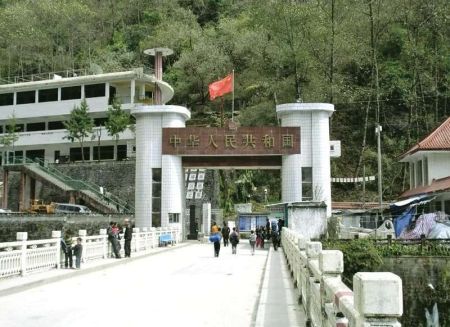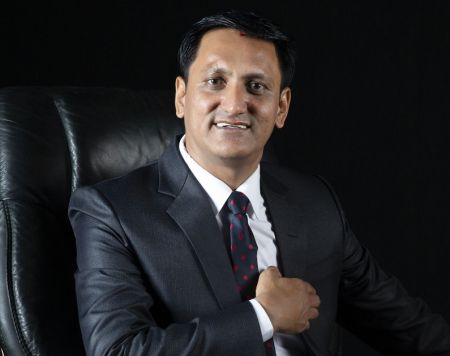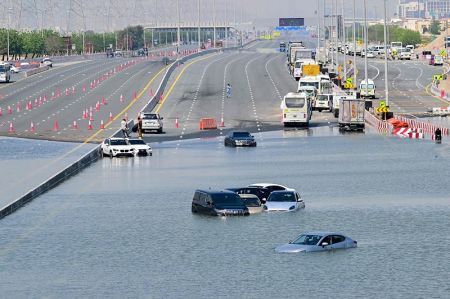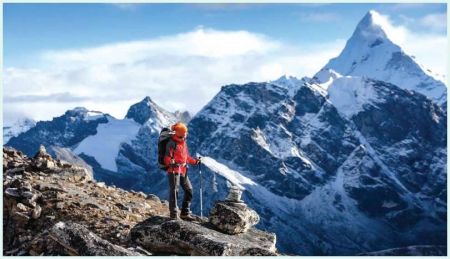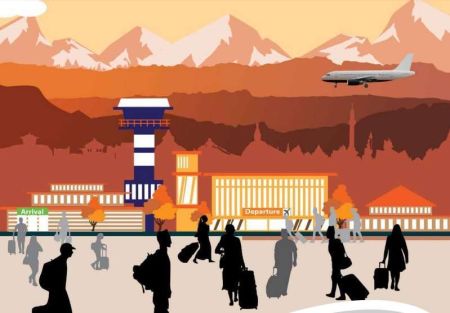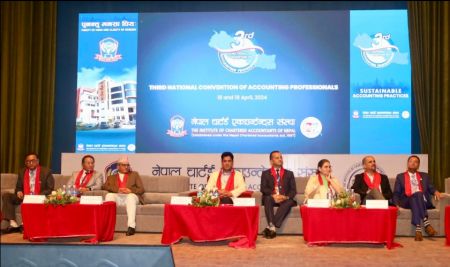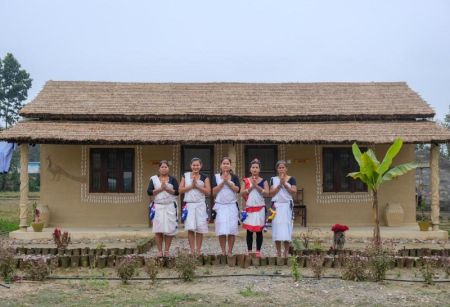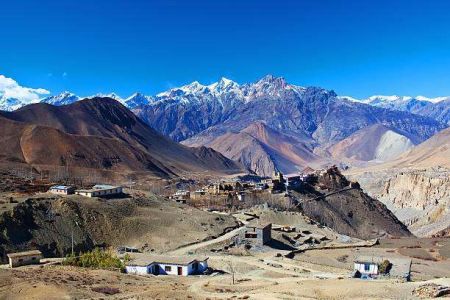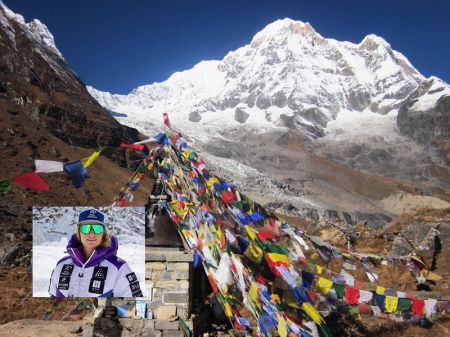.jpg)
Premium positioning for higher revenues, advanced infra-structure & larger domestic and foreign direct investment are the mainstay of Nepali Tourism Next, whereas Nepal already excels in authentic and ethnic route to tourism, notes Prof. Ujjwal K Chowdhury.
The Tourism industry is growing stronger by the day. Celebration of World Tourism Day across the world on September 27 signifies the importance that nations attach to it to achieve their economic development goals. In spite of recession, in some parts of the world, the outlook for the global tourism gross revenue of 2013 is above USD 700 billion. One out of every seven persons travelled to another nation in 2012 and 1 out of every 11 adults of the world is engaged in tourism industry. Emergence of new travel destinations and innovative approaches for catering to the needs of the industry, provides it with the potential to be an important component of the national economy.
In light of these facts, the New Business Age reviewed the present standing and potential sectors of Nepali Tourism industry and the lessons that the industry could learn from countries including India, Malaysia, Bhutan, Middle East, et al.
An international symposium entitled “Understanding Tourism and Aviation Next in Nepal”, participated by niche experts from India, Malaysia and Nepal itself, was organized in Kathmandu in September this year. This symposium jointly organized by New Business age and Hotel Del’ Annapurna and sponsored by Qatar Airways and Ace Travels, focused on: raising service standards; creating premium brand of experiential tourism apart from the existing largely value-for-money backpackers’ tourism; positioning of exotic Nepal; upgrading the tourism and hospitality infra-structure: adding new international airport, additional terminals and new air-routes; and increasing domestic and foreign investments in tourism services.
(1).jpg) |
| Secretary of the Ministry of Culture, Tourism and Civil Aviation, Sushil Ghimire,inaugurating Tourism and Aviation Next 2013. (From left) New Business Age Pvt Ltd Chairman Madan Lamsal, Incredible India pioneer Amitabh Kant and South Asia Director of Tourism Malaysia Amran Abdul Rahman. |
Tourism Goal: 5% of GDP by 2080 BS
As the opening speaker, Secretary at the Ministry of Culture, Tourism and Civil Aviation, Sushil Ghimire elaborated on how Nepal aims to achieve tourism turnover equal to 5% of the GDP by 2080 BS. Presently the turnover is less than 2%. Secondly, Ghimire focused on strengthening the capacity of national flag bearer, Nepal Airlines and claimed that the ministry is working towards that end. He laid stress on accessing all major stake-holders’ views while preparing a long-term future course for a private sector driven domain like that of tourism & aviation.
Following Ghimire, key participants from India and Malaysia shared their experience and case studies on how their respective nations took their tourism industry to next level. Key giveaways of their presentations follow:
Case-studies: India & Malaysia
INDIA
The former Tourism Secretary of India and of Kerala state, and the man behind “Incredible India” and “God’s Own Country Kerala” branding, Amitabh Kant, lamented that the positioning, branding and pricing of an otherwise high-end premium exotic destination like Nepal has been actually very low. He rued that the focus has been on low-end mass tourism in Nepal (however the arrival number has not yet touched a million), while it now needs to be on niche high-end tourism promotion with a clear positioning.
Noting that more than 1 billion people are travelling and almost 9% of the global GDP has been in tourism across the world, he said, Nepal needs to catch up with this burgeoning industry. Moving from sun-sand-sea focused tourism, globally travelers are looking at authentic experience now and Nepal has a huge advantage in it. Referring to the lessons learned from “Incredible India” campaign, he noted that to take Nepal to the next level in this sector, unique positioning and integrated marketing communication strategy and plan are a must.
Kant ended expounding 6Cs for a holistic tourism development approach: civic governance, capacity building, communication strategy, convergence, community participation, and civil aviation.
He expanded the concept that in every crisis there is an opportunity. During the onset of the “Incredible India” campaign, there were several crises going through India and the world. The 9/11 attack on the World Trade Centre (WTC), the Gujarat earthquake, the coalition force war in Afghanistan, attack on the Indian Parliament, etc, were the stories of the day. India was then very low in several aspects of the travel trade competitive index.
Despite these setbacks, the unique positioning of “Incredible India” was taken up, and international consumers were reached directly through exhaustive campaigns, consistent communication, public relations in travel media, and documentaries in television channels. The results started showing up. During this phase, India strategically positioned tourism as a major engine of economic growth, harnessed the direct and multiplier effects of tourism for employment generation, focused on domestic tourism as a major driver of tourism growth (India being a large nation), positioned India as a global brand, acknowledged the critical role of the private sector, and, finally, created and developed integrated tourism circuits based on India’s unique civilization (like the Golden Triangle of Delhi-Jaipur-Agra, the Buddhist circuit of Gaya-Ajanta-Ellora, the sun-sand-sea tourism of Goa-Pondicherry, etc).
.jpg) |
| Kerala, India |
Some key strategies and actions taken during the last ten years for increasing the expansion and impact of the “Incredible India” campaign are:
• Integrated communication strategy with the aim of promoting India as a destination of choice for travelling from 2002.
• Showcasing different aspects of Indian culture and history like yoga, spirituality, etc.
• In 2008, the Ministry of Tourism launched a campaign targeted at the local population. Aamir Khan endorsed the campaign ‘Atithidevo Bhava‘ (Guests are like God).
• In 2009, Minister of Tourism, Kumari Selja further extended the “Incredible India” campaign at the domestic level. Of the total USD 200 million budget, USD 12 million was allocated for promoting domestic tourism that year.
Result
• In 2000 India’s share of the world’s tourism income was 0.5% but by March 2013 the share soared to 1.7%.
MALAYSIA
The South Asia Director of Tourism Malaysia, Amran Abdul Rahman, elaborated on how Malaysia moved away from ‘Coca-Cola tourism’ and how it became a major tourist destination from an ‘add-on’ tourist destination for Singaporean tourists, two decades earlier.
The nation received 13 million visitors in 2003 and 25 million visitors in 2012. The target of 2014, declared as the Visit Malaysia Year, is now 36 million visitors with USD 44 billion income.
Elaborating on the key factors that assisted in gaining such results, Rahman said, Malaysia could achieve this success due to infrastructure growth including the remarkable makeover of Kuala Lumpur Airport, changing mindset of the people and government with tourism coming under direct special supervision of the Prime Minister, heavy promotion of rural Malaysia while ensuring ethnic amity, and focusing on MICE (Meetings, Incentives, Convention and Exhibitions) tourism events heavily.
.jpg) |
| Malaysia |
Tourism Next: Branding and Capacity-building are Key Drivers
The Tourism Next panel, a panel comprising some key stakeholders and industry experts on different facets from the private sector, elaborated on key areas where the private and public sector should focus to alleviate the existing condition of the industry. Moderator of the panel, Upaul Majumdar, CEO of Hotel Del’ Annapurna laid focus on developing a ‘can-do’ attitude, instead of just talking about challenges.
Nalin Mandiratta, General Manager of Soaltee Crowne Plaza, focused on the need of constructing a large Convention Centre for MICE activities to grow; organizing more sports tournaments in Nepal, preparing and implementing dynamic and integrated destination marketing, preparing an integrated One Nepal concept by uniting efforts of various sections of the industry, and focusing on China and India more.
Madhusudan Acharya, the Vice President of the Nepal Association of Tours and Travel Agents, explained the benefits of unique positioning by referring to the success of Apple and said that to establish Nepal as a unique tourism destination, it needs similar positioning based on green initiatives and its ethnicity. He emphatically noted that tourism is both a cause and an effect of more holistic socio-economic growth. He noted that Nepal-China roads and Kathmandu’s direct air connectivity with Chennai and Bengaluru are much needed pending measures.
Nandini Lahe Thapa, the Senior Director of the Nepal Tourism Board and International Marketing In Charge, noted relative maturity of Nepal as a tourism destination However, she noted that it has been quite low at the high-end of the price-service spectrum. “We have lowered our rates for other tourism services, but the cost of travel to and from Nepal has been exponentially costly. Hotels have already set the bar higher, but travel trade still needs to come together and raise the standards with rational pricing,” she noted. Promotion of new destinations is possible, she told, if concrete proposals come to NTB from entrepreneurs.
Sumit Baral, the Senior Consultant with the International Finance Corporation of The World Bank Group, working for its investment climate programmes, with key focus on tourism programmes, recalled how Lufthansa dropped Kathmandu sector to protest the rampant child labor in the carpet industry and how it adversely affected German tourists’ travel to Nepal. Also, a diagnostic study categorically has shown that service standards decline has been the major factor behind lower per day spending by tourists. Noting that Nepal does not feature in luxury travel, he illustrated how Peru since 2000 has positioned itself as high-end destination, and how Maldives with almost same number of tourists like Nepal (little less than a million a year), actually has been earning double the income that Nepal has been earning from this sector.
Talking from the tourism technology perspective, Prerna Mimani, the Country Head of Amadeus (a global leader in travel trade distribution and marketing), noted that the e-commerce route to promote Nepal is must while stating that presently it is still at a rudimentary level. Mimani elaborated on the potential of collaborating with global travel portals with ethnicity focus for Nepal through efficient use of e-commerce.
Suman Pandey , Chairman of PATA Nepal and an entrepreneur, defended budget tourism noting it as an important part of the Nepali tourism eco-system and saying that it is different a way of travelling to experience the country. He poignantly noted, “The seven days Golden Triangle plan is over-done and new tourism products are now necessary, as seen in the case of trekking tours being re-packaged as photography tours.” Next to that Pandey suggested on organizing events replete with potentials to gain global media visibility, as seen in the case of the earlier Nepali cabinet meeting at Everest base-camp.
Aviation Next: Start Small, But Act in Unison
Civil aviation has an important role in tourism industry. A separate discussion panel, “Aviation Next”, forwarded areas in which Nepal has to improvise in the days ahead to gain its tourism promotion objectives. Valentino Bagatsing, the Country Head of International Finance Corporation (IFC) of The World Bank group and moderator of the session, raised the issue air safety standards in Nepal. He noted, that there have been 70 accidents in 60 years, 3 of them being in the last two years and informed that IFC is presently tasked with safety management systems research and planning.
Bhola Bikram Thapa, the MD of President Travels, emphasized that the “Government should make stronger policies and facilitate processes, and not do business directly.” He lamented that the government has been unable to add more aircrafts to the existing fleet of the national carrier, Nepal Airlines.
Ghanshyam Acharya, Chief of Corporate Affairs, Simrik Airlines, noted that three out of every four international traveler to Nepal is airborne and said IATA’s Outlook for 2013 that looks forward positively at $711 billion global tourism turnover, has huge potential for Nepal’s tourism sector too. Adding to it, he said that blacktopping of many airports in Nepal has increased air safety and air-travel is now available to middle class as well. However, he pointed the need for better regulatory support from policy-makers and rued that no domestic carrier has flown new aircraft since 1998.
Representing the government voice, Buddhisagar Lamichchane, the Joint Secretary of Civil Aviation, and Roshan Chitrakar, the Deputy Director General of the Air Navigation Services of CAAN, shared the government’s initiatives in addressing the needs of the industry. Chitrakar informed that blacktopping and expansion of airports is going on in a high speed and the hurdles in fleet expansion of the national airlines are now almost removed. He also informed that one year compulsory Air Traffic Controllers’ training is now split into two parts - six-months in the first phase and then after some work experience another six months of second phase. This will address the problem of human resource crunch in the industry, he added.
Lamichchane shed light on the installation of navigational safety equipment, and emphasized that the air safety standards in Nepal is reasonably strong by global standards. Further, he said, “Nepali air-routes integration with more global air-routes is underway. And the construction of a second international airport at Bara which will create an East-West air corridor, is also taking off soon. Lamichhane further informed that “the regulator and service provider functions of government with regards to aviation are being separated soon and a global consultancy is looking into this.”
The Air India Country Head, TK Saha, defended the pricing strategy of his carrier noting that only 10-15 percent seats go vacant. He advocated for new small aircraft routes and services for various potential sectors like Gaya-Lumbini, Patna-Kathmandu, and Varanasi-Pokhara.
Ramdas Shivram, the Qatar Airways Country Head, brought in a basic issue and presented with emphasis. “Garbage management is poor in Kathmandu airport” he said calling for “a blended approach that includes raising awareness in passengers, training airport staff, and implementing strong punitive regulation.” He also advocated for more efficient and faster immigration services, quest for quality tourism instead of stressing only on volume-based tourism, and focus on finding and investing in new markets to expand Nepal’s tourism and aviation base.
.jpg)
Smaller Cases: Bhutan and Sikkim
BHUTAN has positioned itself as a ‘high-value, low-impact’ tourism, with USD 250 as average on season spending per day by a tourist, and minimum of USD 200 any time of the year. Bhutan claims to have the Highest Gross National Happiness, and the slogan of Bhutan Tourism is “Happiness is a Place”.
.jpg) |
| Tiger’s Nest Monastery, Bhutan |
SIKKIM
What should be the agenda for Sikkim in 2013 if it plans to be anywhere close to Switzerland? It’s the oomph factor, about Switzerland, Dubai, and even backdoor ASEAN countries like Singapore and to some extent Thailand, Malaysia and Indonesia that make them a most sought after destination. Switzerland received more than 10 million tourists in 2010. Even Goa received nearly 3 million tourists in 2010. The highest number of foreign tourists who visit Sikkim never crossed the 5000 mark in a month ever till now.
Sikkim would need to emerge as a shopping and fun destination; a destination which film makers and market executives like. Sikkim hence, has introduced para-gliding, trekking, and bike riding in recent years, a few world class universities, a few niche products with enviable reputation, a highly educated libertarian civil society.
“It’s empowering every Sikkimese to figure out where Sikkim should need to focus on rather than a top to bottom approach” has been Chief Minister Pawan Kumar Chamling’s Approach in developing the Indian state.
Sikkim came out with an integrated vision that brought together and synergized Nature & Trekking Tourism, Eco-tourism & Wilderness Tourism, Village/Rural & Home stay Tourism, Adventure Tourism, Wellness Tourism: Meditation, Yoga, Spa & Herbal medicine etc, Pilgrimage & Buddhist Tourism, Culture & Heritage Tourism, Conference Tourism (MICE destination), Tea Tourism, and Snow Travel and Hydro Tourism.
In the last decade, Sikkim has also pro-actively developed these niche aspects of tourism industry there: Flori-Tourism, Geo-Tourism (fossil study), Fairs-Festivals Tourism, Wedding/Honeymoon Tourism, Peace /Health Rejuvenation Tourism, Heli Tourism, Monsoon Tourism, Cave Tourism, Ekant Vas & Agyat Van Vas, Developments of lakes and wetlands, Wayside Amenities- at every 10 Kms distance, Arts Crafts and Souvenir and some premium destinations.
.jpg) |
| Sikkim |
.jpg) Premium Positioning for Nepal’s Tourism: Possible Road-map
Premium Positioning for Nepal’s Tourism: Possible Road-map Nepal, the 36th largest nation of the world by land-area, and enriched with most of the world’s tallest mountain peaks, huge fresh water-resource and glaciers, home to some of the best lakes and forests in South Asia, and a nation rich in centuries-old civilization heritages and cultures, has often been under-valued in tourism. The recent Travel & Tourism Competitiveness Index 2013 places Nepal at 112th position out of 140 nations surveyed, while Switzerland retained its position at the top of the chart.
Situation Analysis:
While Nepal is the preferred Himalayan destination globally, it is one of the cheapest travel destinations. Ministry of Culture, Tourism and Civil Aviation study shows that the average daily spending of an airborne tourist in Nepal skidded down to USD 35 from USD 79 in 2003. Some 700,000 foreign tourists (including some 530,000 by air) came to Nepal in 2012 (as per Nepal Tourism Board estimates). But the image of Nepal has been that of the backpackers’ paradise, value-for-money tourism, and often a glorious destination for the run-away tourists. The image of Nepal’s Tourism has been further tarnished in the last decade by the insurgency followed by political instability.
However, things can take turn for the better. This piece throws open the discussion on the paradigm shift in Nepal Tourism. Without harming the current flow of tourists to Nepal every year with an average per head daily spending of USD 48, we can still look at creating a new crop of premium tourists who will hopefully spend a fortnight minimum in this Himalayan nation with a daily expense of at least USD 200 (four times higher than the current average). Even if there are 5,000 such tourists in a year to begin with, the national average and the total income of all stake-holders of tourism economy will have a qualitative leap ahead.
.jpg) |
| Mt Everest |
Positioning of the Premium Tourism Product
Let us look at what the premium tourists look for and what ‘tourism product’ can be dovetailed for them. Then, we can look at what channels and process of marketing communications should be taken to ensure that 5,000 or more such premium tourists actually come for their date with the Himalayas and spend a daily average of USD 200 or stay in Nepal for more than 14 days.
The possible product must have a distinct positioning with a clear and creative packaging. The positioning that can be suggested is ‘Pristine, Priceless & Personal’. The pristine beauty of nature and culture of Nepal needs no further elucidation. The experience of the ‘product’ has to be made priceless incorporating a wide variety of the best expectations fulfilled - the Wow-effect of which should out-price the costs. And, surely, the entire experience has to be very personal, to be treasured for long, with an immense nostalgia-value.
.jpg) |
| Lumbimi |
Premium Tourism Product Defined
Keeping these parameters in mind, it is suggested that the proposed product should be for couples only, of any age, to make it truly experiential and personal, and should be an all-planned well-packaged fortnight-long visit incorporating the best elements of Nepal.
For example, a very personal aspect is ensured the moment the visiting couple immediately after landing at Kathmandu airport or on reaching the pre-chosen five-star or boutique hotel is traditionally welcomed and given a set of traditional Nepali wear (based on personal information given while booking the trip). The visit to the five most known heritage points of Kathmandu-- blending heritage, royalty and spiritualism in good measures-- must surely be done along with a broad understanding of the valley over the next two full days in the country, land-travel served with the best of tourist cars available.
The visit in Kathmandu on the fourth day can be customized to each couple’s needs: cuisine, shopping, social entrepreneurship or educational initiative, any theatre or cultural activity, the NTB archaeological museum or any other specific spot. Hour-long flight above Mt Everest and Mt Kanchenjunga can be another sure winner on the morning of this day.
.jpg) |
| Nagarkot |
The fifth day can be at Nagarkot with the sunset and sunrise covered soaking in the beauty of natural landscapes. Subsequent two days can be spent at Chitwan, with lake, park, rural life, festivities (season specific),etc., all planned well.
Eighth to tenth days can be at Pokhara, ensuring all aspects of the valued hill-destination rated among top ten by Lonely Planet - a bit of trekking, rafting and para-gliding, depending on the couple’s interest, age and health. Celebrations like anniversary or birthday or even the marriage of the couple in a few cases could be another ‘personal’ winner either in Kathmandu or Chitwan or Pokhara depending upon the date.
Eleventh and twelfth days could be a visit to busy Terai city of business: Birganj or Nepalgunj to bring home other aspects of Nepali life and economy, with shopping, handicrafts, etc., thrown in.
Last two days can be used for a visit to Lumbini and Buddhist heritage sites or, for those who want it otherwise, to Muktinath and more lakes, hills and forests.
And, as each couple bids adieu, they should be given an exquisitely packaged album of best moments of their visit, their blogs and comments taken for social media use, and take-away souvenirs also given for their closest family members based on the information shared while booking the trip.
.jpg) |
| Patan Durbar Square |
Integrated Marketing Communications:
For such a concept to click at the market there has to be a focused high-decibel concerted IMC campaign integrating all four channels of communication: online, offline, on-air and on-ground and across ten to twelve selected markets of the world from where most tourists come to Nepal, as understood through research conducted by professionals.
An experiential tourism product needs an experiential video that documents actual experience of say, three distinctly different couples -an Indian, a Chinese/Japanese, and an European/American- who go through the entire ‘product’ and share their views online and on camera. Such a video needs to be used in every marketing meet, aired in selected channels across the globe in the target nations, and clippings promoted through YouTube. Such experiential videos without any explicit marketing commentary, speak volumes more than guided narrative documentaries of hills and rivers made usually from the government stable.
Social Media and the internet make the most powerful channel to reach to an audience scattered across the globe. Hence, a very high-end interactive portal, ideally on third generation internet platform that’s being customized to each individual user, on the concept and product of Premium Nepal, incorporating blogs, photo albums, do’s and don’ts at every level of the experience will also serve the purpose well. Along with the portal, intense and creative use of Facebook, MySpace, Google+, Dig, Youtube, Twitter, Blogs in e-groups, and other social media platforms need to be used with the single-minded purpose of creating a premium positioning of the said high-end tourism product of Nepal. Online booking of this product should also be facilitated through the right mix of technology options.
A Premium Nepal Tour Plan Book can be an effective offline (printed) tool of communication. The book will interestingly present possible experiences and options for each day of the visit on one side and provide space for documenting personal experiences, cuisine, culture, visits, and people befriended in the process and small anecdotes on the other side. Still pictures of various events can also be placed and preserved. This book will eventually have an immense personal nostalgia value and will also serve to market the ‘product’ to future customers spreading a positive buzz or word of mouth. Each customer in the process becomes an advocate realizing thus the life-time value of the premium customers.
PR & Sales Driven High Decibel Road-Shows
However, closing the deal will largely happen through an intensive PR driven high-end road-show in at least ten to twelve of the leading sources of tourism to Nepal. This road-show must combine the said film, tour plan-book, and interactive session by the organizing partners and must lead to a plethora of writing on Nepal and on this uniquely positioned tourism product. The road-show must bring together the premier tour operators to South Asian destinations, adventure or heritage tourism operators, leadership of selected chambers of commerce, entertainment industry and travel journalism biggies, including the lead travel writers. The cities where the road-shows can be held may be selected from Delhi, Mumbai, Kolkata, London, New York, Shanghai, Hong Kong, Singapore, Dubai, among others. These road-shows must ensure immediate or follow-up bookings of couples coming to Nepal in the subsequent season.
PPP Model with a Consortium Approach:
This project can only succeed if it is done on private-public-partnership in which Nepal Tourism Board representing the government and a consortium of private tourism players join hands to first build a brand of Premium Nepal and then execute the product immaculately (execution largely being in private hands). The Consortium can be of a few five star and boutique or heritage hotels with properties in all the places covered in the tour, domestic airlines, premium road transport providers, adventure tourism organizers and may be helicopter-services providers, apart from selected handicrafts-cuisine-apparel-souvenir providers.
Revenue Output
Even if 3,000 couples, with per couple investment within Nepal being USD 5,000 for a fortnight of Premium Nepal tourism experience, come in a year, Nepali Tourism industry stands to gain a minimum of 15 million USD minus the marketing communications expenses and tour operator commission of a maximum of 20 percent. Some 12 million USD means an additional Rs. 10,000 million infused into the economy by just one new concept implemented creatively and aggressively! Are the government and the industry listening?
(The author, the Consulting Editor of the NBA, is the former Dean of Symbiosis International University, Pune, Mumbai, and Whistling Woods International, Mumbai.)





